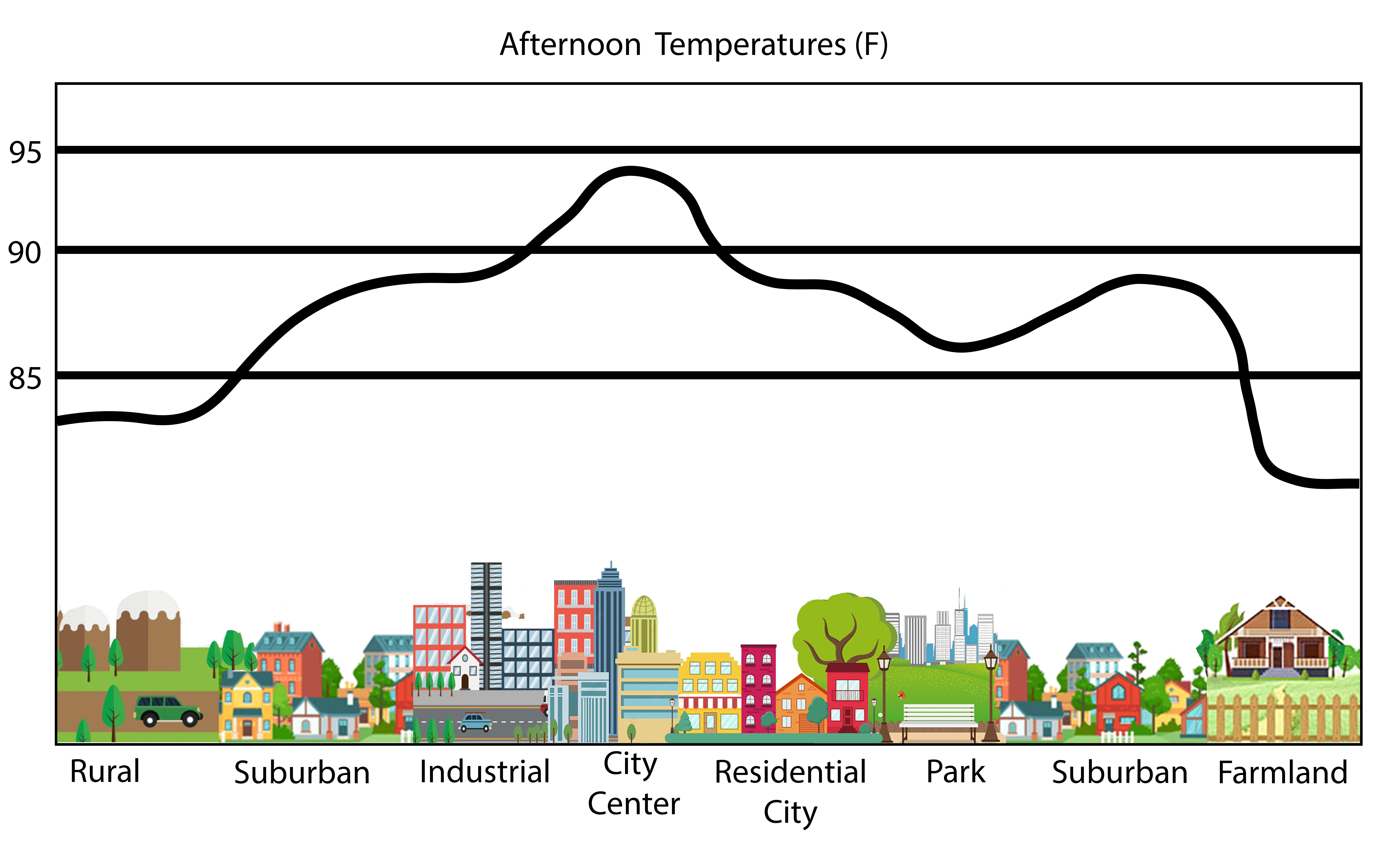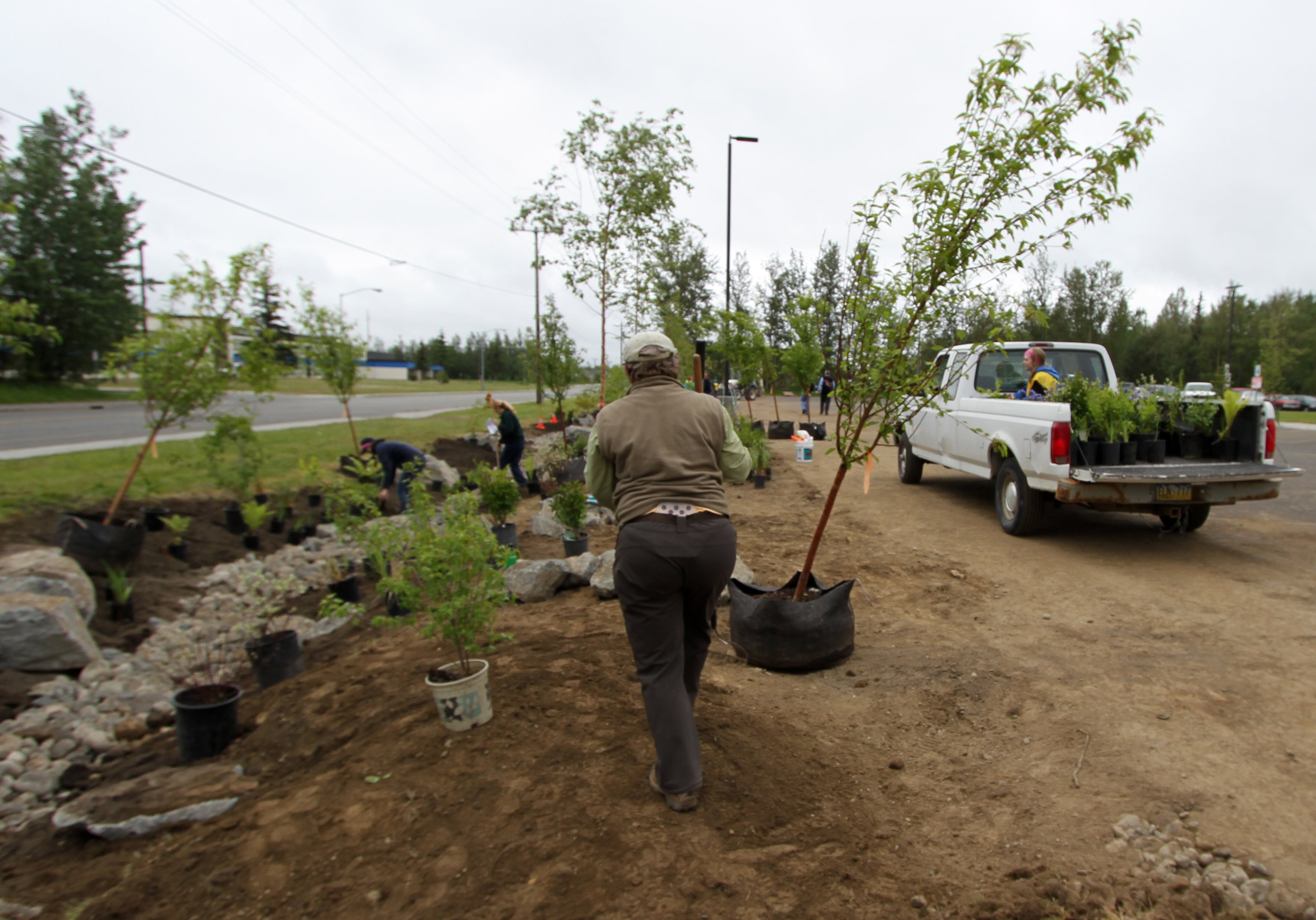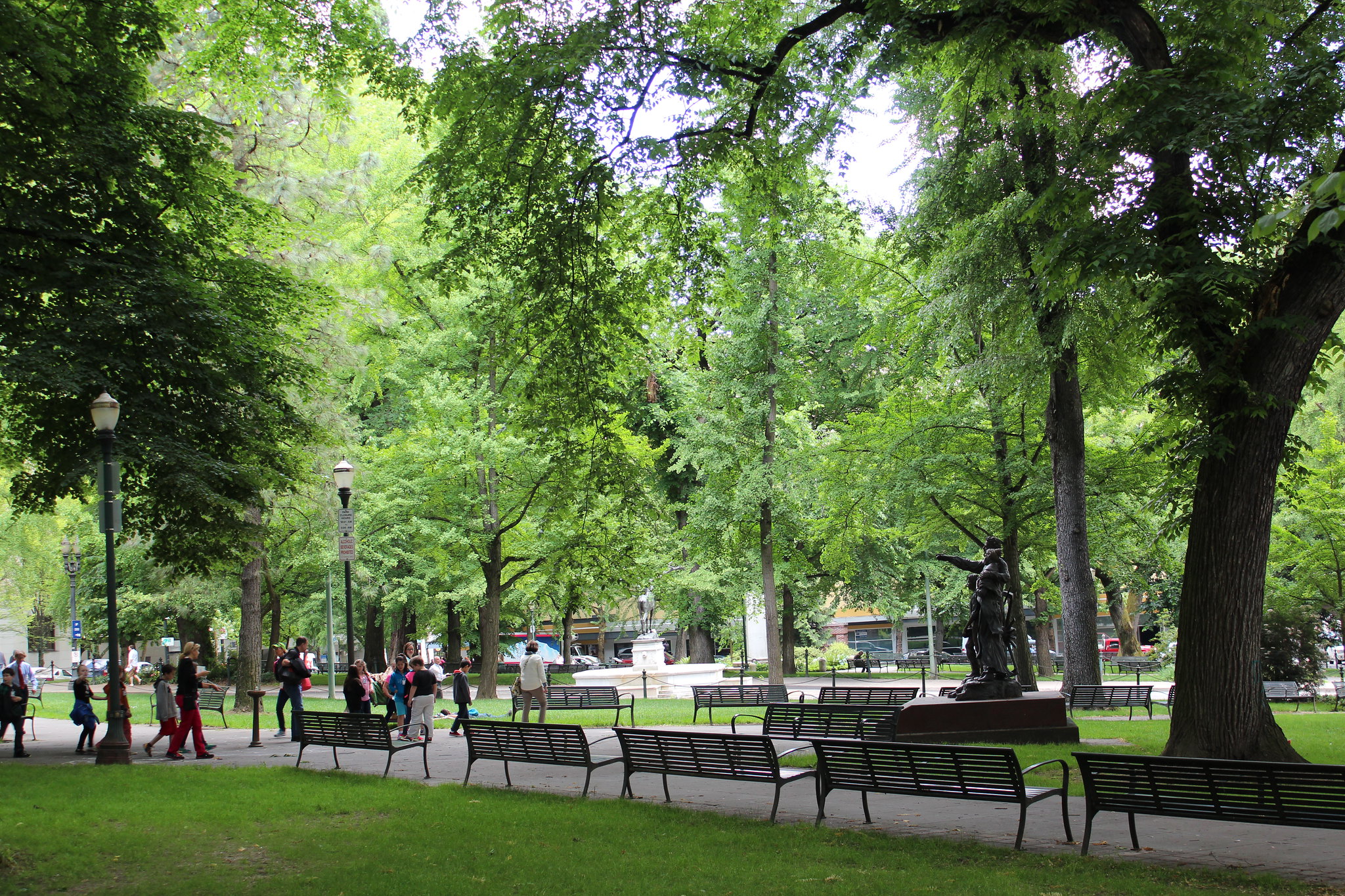Estimated reading time: 5 minutes

Temperatures are on the rise in the Northwest due to climate change, with increases of 2 to 3 degrees Fahrenheit since 1925. Cities are especially vulnerable to warming, as temperatures in city centers are, at a minimum, 2 to 3 degrees F higher than those in outlying areas. Higher temperatures in urban areas are attributed to the ratio of pavement to greenery (or vegetation) present. This phenomenon is known as the “heat island effect.” Without vegetation or trees to provide shade and limit exposure of pavement to sunlight, cities will warm faster than outlying areas. Projections for 2050 estimate that 80% of the global population will reside within cities or urban areas. This means that as climate change causes hotter temperatures, the majority of the global population will be vulnerable to extreme summertime temperatures in cities. Community planners and officials can offset urban heat island effects by ensuring abundant urban forests.
What is an Urban Forest?
An urban forest is a grouping of trees or greenery within the limits of a city, town, or suburb. Urban forests include trees that line city streets, trees planted in parks and green spaces, and trees in backyards. A key part of urban forests is the tree canopy, which refers to the amount of coverage supplied by urban forest vegetation visible from an aerial view. The urban tree canopy includes stems and leaves from even the sparsest trees, as well as the coverage provided by smaller bushes. Benefits from urban forests increase with higher tree canopy cover.
Benefits of Urban Forests
The heat island effect can be reduced by planting more trees and expanding urban forests. Urban forests help to lower temperatures while also providing cities with a variety of human and environmental health benefits, like cleaner air. As trees and plants grow, they trap carbon from the atmosphere in their wood and roots. This process is commonly referred to as carbon sequestration. Trees can also aid in the removal of air pollutants by absorbing gasses or giving harmful air particles a place to land. Harmful air particles can be “caught” by the stems and leaves of trees, and then washed away with rainfall where they can be dissolved through runoff water or absorbed into the soil.
Urban tree canopies can also provide shade to homes and buildings, which helps residents and commercial properties rely less on artificial cooling. Reductions in the need for artificial cooling helps to cut down on the amount of harmful air particles released by cooling systems and decrease energy costs in the hotter months. One study found that Northwest cities can save roughly $478,000 in annual cooling and heating costs for every square kilometer by creating a denser urban tree canopy.
Urban forests provide green infrastructure, or trees and vegetation that help to improve air and water quality and reduce impacts from extreme weather events. Trees and vegetation collect and slow the flow of water from rainfall (whereas gray infrastructure pushes water away). As climate change causes more extreme precipitation events and precipitation to fall more as rain than snow, cities are at an increased risk of flooding during storms. Flooding can lead to trash, debris, and harmful substances being swept into storm drains, causing lower water quality. As man-made systems deteriorate with time, the capacity to manage rainfall will decrease, leading to a decreased quality of water. Green infrastructure, however, can reduce the risk of flooding as well as filter water before it enters water supply systems.

Mental health can be heavily impacted by influences of climate change in the Northwest. Urban forests have the unique ability to naturally aid in restoring mental and physical health for residents. With ample shade and aesthetically pleasing urban forests available, residents are more likely to participate in community and outdoor activities, which leads to physically healthier and mentally happier neighborhoods. Studies also show that hospital patients with abundant urban forest visible from windows are likely to heal faster than those without.
Minority neighborhoods in the Northwest are at a disadvantage in accessing green spaces and are more likely to experience reduced air and water quality, which can lead to decreased quality of life and social standing. These negative impacts lead to increased rates of crime, violence, and higher mortality rates. However, one study showed that increasing urban forests and access to green spaces can reduce crime and violence. Another study in the Pacific Northwest found that urban forests can increase life expectancy for residents, as well as reduce rates of attention deficit hyperactivity disorder (ADHD) and Alzheimer's disease.
Challenges and Opportunities in Promoting Urban Forests

City planners face a variety of problems concerning urban forests. First, policy and planning issues greatly limit the time available for city workers and community members to plant trees. Although urban forests are necessary, there are other concerns for communities that are higher priorities (e.g., adequate and safe transportation and affordable housing). These take precedent for time as well as funds that the city can allot to new endeavors.
Even if tree planting is approved, projects are still at risk of being unsuccessful due to other factors. For example, many trees that are planted will simply fail to thrive because of poor quality of soil. Light pollution can also affect the development of adolescent trees; artificial lighting in cities can affect a tree’s natural growing seasons and patterns and result in trees failing to reach full maturity and sometimes dying prematurely. With trees that successfully grow, cities may not be able to fund the work needed to monitor and maintain them to reach full maturity.
Despite these limitations, projects are in place across the Northwest to promote abundant urban forests. Many urban tree projects, like the Treasure Valley Canopy Network in Boise, or the Washington Tree Equity Collaborative, focus on collaborative efforts with public and private organizations to fund necessary projects and tree planting efforts. Other projects throughout the Pacific Northwest also aim to educate the public on the need for more urban trees and why an abundant urban forest will benefit the community. These efforts will go a long way in ensuring healthier cities in a changing climate.
Additional Resources
- Urban and Community Forestry Program | US Forest Service
- Alaska Division of Forestry & Fire Protection
- Reducing Urban Heat through Tree Planting in Boise | USDA Climate Hubs
- Portland Urban Forest Action Plan
- Washington Urban and Community Forest Program (UCF)
- The little-known physical and mental health benefits of urban trees | Yale Climate Connections
- 5 reasons why cities need a healthy tree cover | World Economic Forum




